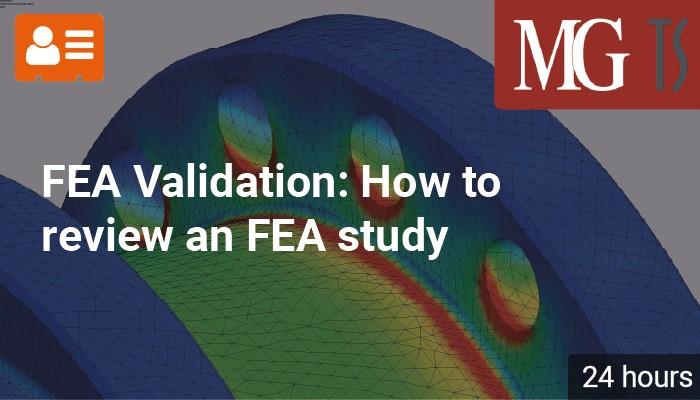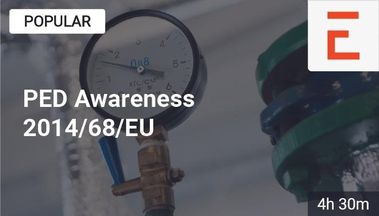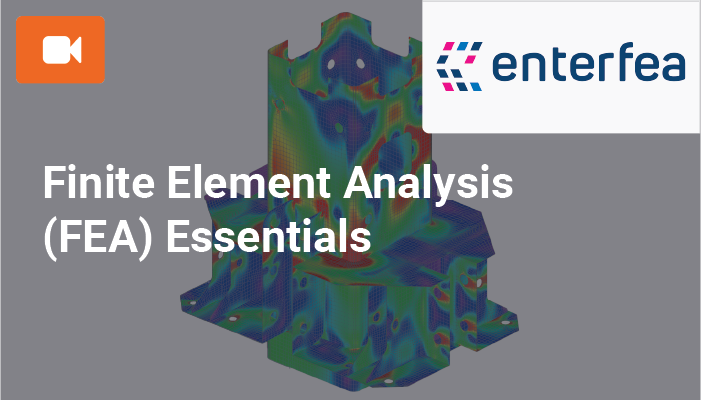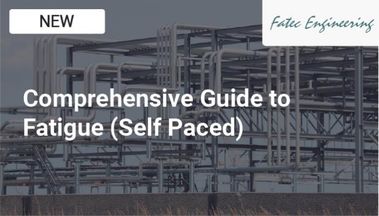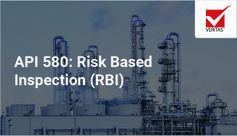FEA Validation: How to review an FEA study
Join the Program
Price: €1700
Registration deadline: 15 July 2024
24hr Content
34 Credits
Mart Heerschap
INCO2301
Format:
Instructor-led
"Dates and Payments will be arranged with you after the registration deadline. Register today!"
Join the Program
To register multiple team-members at once, use the link below.
Need a dedicated version of this program for your team? Please contact us.
Course Objective
“To explain to the non-specialist engineer the steps in an FEA study, and how they should validate and verify the quality of an analysis.”
Instructor-led course
Custom scheduling
Industry Expert
On-site or virtual
1-year access
to course material
PDH Hours qualified course
Read more here
About the course
In-Company
Live sessions
24hr Content
Registration deadline
15 July 2024
English
INCO2301
FEA (Finite Element Analysis) is used regularly for the analysis of structural components or loading patterns which cannot be assessed using analytical design rules. Non-specialist engineers are often tasked with managing such studies, defining the scope of the study or approving the study. For engineers in such a role understanding the work flow of an FEA study and how to verify the robustness of the results is a valuable skill.
This training course takes the participants through the steps in a linear FEA study, from defining the problem and boundary conditions, to how the results should be presented in a usable way. For example it is shown which grid types are possible, when each would typically be used and what is a realistic grid density. The documentation that should be provided with the results is discussed and industry standard analysis techniques for high stress locations are explained.
The course consists of 24hr of live sessions with the instructor. All training content is provided through your EngineeringTrainer account.
After the course you maintain 1-year unlimited access to the course, including any new course material. This allows you to perform modules again should you need to refresh your knowledge.
Meet your instructors
Program & Details
Problem definition
Good and bad examples of problem definition
When to use FEA?
Overview of the work flow in an FEA study
What are the review moments in this workflow
Verification and validation, what is meant by this?
Splitting the problem up into a number of elements
Types of mesh (beam, shell, brick, symmetric)
Typical application of each type of mesh
Simple Finite Element Representation
Gauss Elimination to solve
Conditioning of the matrix and singular matrices
Tensor stresses, principal stresses and Von Mises stress
What load cases to expect?
Linear addition of load cases
Boundary Conditions
Dimensions
Material properties
How to report these properties
Simplifications, symmetry planes, is the model unnecessarily complex, could some parts not just be done with a hand calculation?
How to check robustness (grid sensitivity)
How should mesh robustness be reported
Numerical discontinuities due to each type of mesh
Effects of physical discontinuities
Examples of things that can go wrong, that you wouldn't expect.
3D images to show the results - what stresses am I seeing?
Stress averaging, interpolation, gauss points
Justification why can the results be trusted - what questions to ask FEA engineer
Explanation of high stresses
Numerical discontinuities, why do they occur and why can these be ignored
Axes and scaling of results figures
Sufficient results and documentation?
Is the initial question answered?
How robust are the conclusions to be drawn from the results?
Summary/what you need to see
Overview of what to expect in a report
A good way to apply the skills learnt in this course is to apply these to recent or current FEA studies.
If the participants are happy to share these FEA reports with Mart, he will:
- review these studies and give his feedback on the reports
- invite the engineers to share and discuss the feedback they gave
- suggest potential improvements based on the knowledge built up in this course
Results
After this course, you...
understand the key steps in an FEA study from defining the problem to determining the conclusions
know what key points of attention the non-specialist should have when reviewing
have been shown best practices for defining the scope of an FEA study
have seen typical element types and the applications of each element type
familiar with what analysis evidence should be present as part of the reporting
have seen the fundamental equations being solved in an FEA study
have seen first hand how an expert reviews an FEA study and how they deliver their comments
can play an effective role in ensuring the quality of FEA workpackages
Who should attend this course
Non-specialist engineers involved with FEA studies, for example those involved in managing a study, the scope definition or approval.
Prerequisites:
No specific prerequisites, though an appreciation of how the results of an FEA study are used in an engineering project is beneficial.
Level: Intermediate
This course consists of instructor-led live sessions which consist of presentations, demonstrations, discussions and worked cases. During each session, participants can ask questions to the instructor (through the chat or microphone) which will be answered in the session.
Access to the course
After signing up for the course, EngineeringTrainer will be in touch shortly after the Registration Deadline to agree a training schedule that is possible for the participants and instructor. Payment will also be arranged at this stage after the Registration Deadline.
Once the training schedule is agreed, you will find the course welcome chapter and instructions on how to join the live sessions in your EngineeringTrainer portal.
Sessions are held using the software Microsoft Teams and a log-in link is provided for each session through the EngineeringTrainer portal. Live sessions can be joined using any device, including tablets and mobiles.
There is a Registration procedure for this training course. Please click on the register button above to register.
Shortly after the Registration Deadline has passed EngineeringTrainer will be in touch to agree a training schedule which is possible for you, typically within 2 months of the Registration Deadline.
No payment is required until after the Registration Deadline. Payment will be arranged together with the schedule after the Registration Deadline.
Typically the course will be split across 6 sessions, an example is shown below, the final date and schedule of the training course will be determined together with the instructor and the participants after the Registration Deadline :
Session 1 4hr
Session 2 4hr
Session 3 4hr
Session 4 4hr
Session 5 4hr
Session 6 4hr
These sessions will include breaks at regular intervals.
A personal digital certificate will be made available to each participant upon full attendance.
Example Certificate:
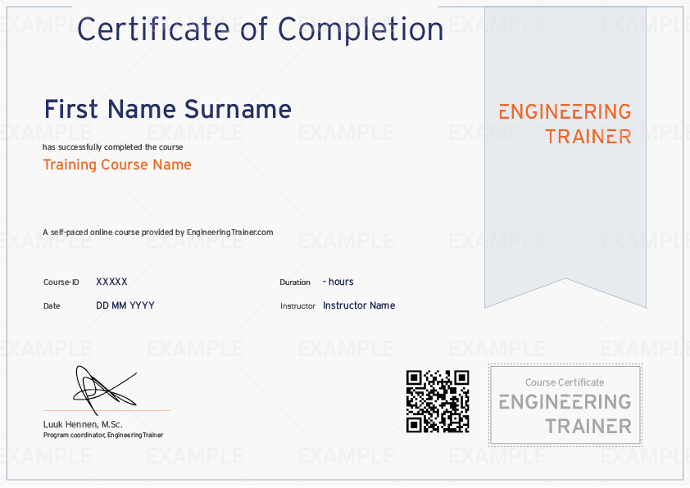
FAQ
This course consists of instructor-led live sessions which consist of presentations, demonstrations and discussions of questions. During each live session participants can ask questions to the instructor (through chat or microphone) which will be answered.
Please note that for privacy reasons no recordings of the live sessions are made or provided.
The training material used in the live sessions, for example the slides or exercises, will be available in the EngineeringTrainer portal for a year after the date of the training allowing you to refresh your knowledge or review material if needed.
No, course content is not available for download.
The training material used in the sessions, for example the slides or exercises, will be available in the EngineeringTrainer portal for a year after the date of the training allowing you to refresh your knowledge or review material if needed.
Please note that for privacy reasons no recordings of the live sessions are made or provided.
Yes, interactive Q&A sessions are part of the live sessions in this course and allow you to interact with the instructor and ask questions.
To respect the privacy of the participants the live sessions will not be recorded, and as such the live sessions cannot be played back. Therefore it is important for all participants to block the time slots of the live sessions in their calendars and be present.
No software licenses are provided as part of this course.
Yes, this course qualifies for PDH hours as per the NCEES CPC Guidelines.
